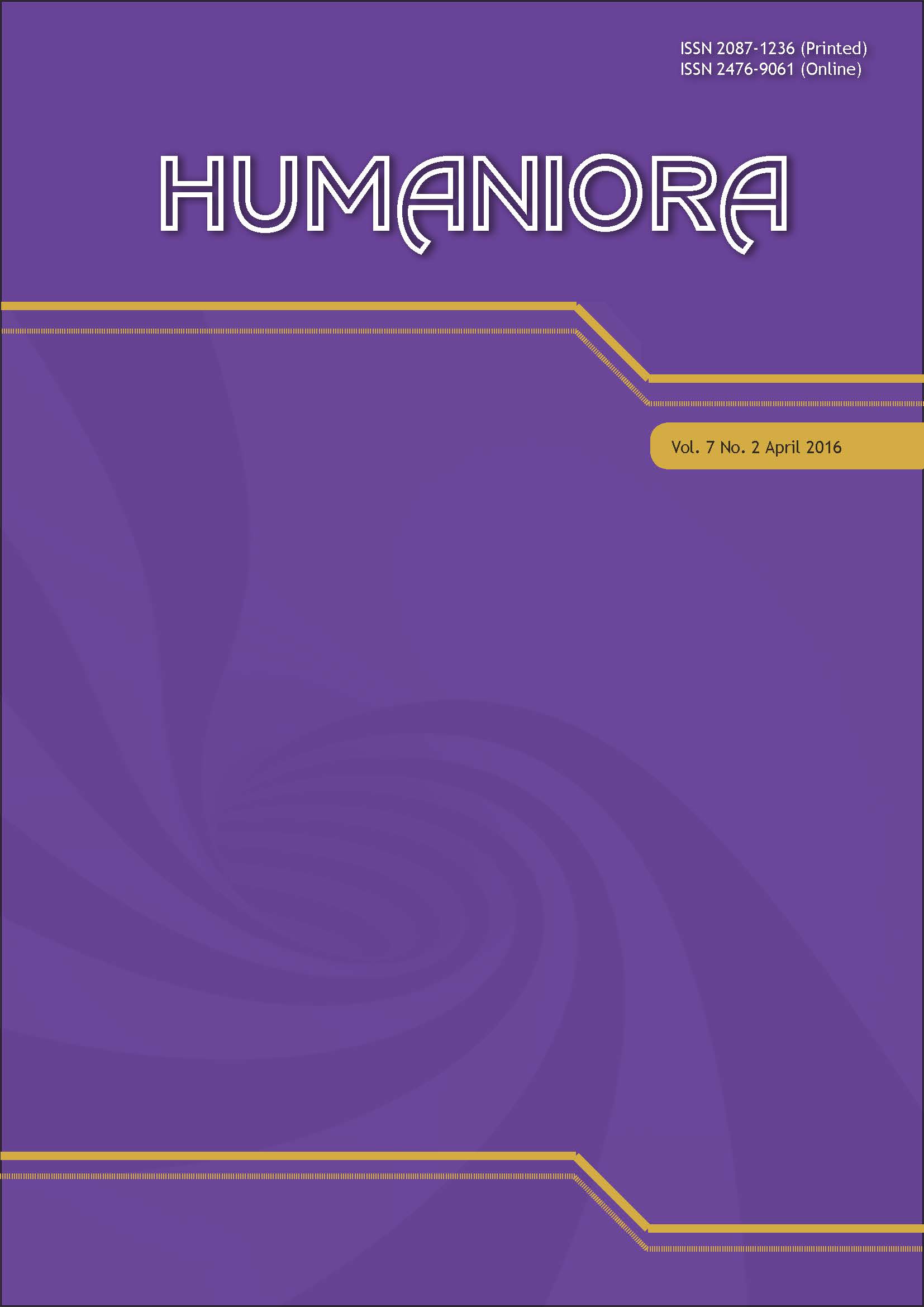Documenting The Richness of Indonesia Through The Cultural Color of Sumatera’s Traditional Textile and Culinary Product
DOI:
https://doi.org/10.21512/humaniora.v7i2.3517Keywords:
textile, culinary product, Sumatera IslandAbstract
Analysis of cultural color was an approach to a better understanding color from cultural stand point, unlike the others color studies which looked at the psychological aspect of color. Johannes Itten’s theory of color served as a thinking base in this study. The theory was reflected in the cultures of Indonesia and represented by island of Sumatera (Aceh Darussalam, Medan, Padang, Bengkulu, Palembang, and Lampung). The scope of the subject matters was limited to traditional textile products such as traditional costumes, bridal apparel, and culinary. The textile products were chosen because they became reflection of a culture whose place was close to society and this color became the its own identity. The research method was qualitative that consisted of doing literature study, interviewing experts (historians and artists), and visiting cultural centers especially the ones associated with textile and culinary product. The result of this study is presented in the form of morphological matrix on cultural color. The matrix of analysis is supported with arguments and a classroom experiment, which allows students to use, cultivate, and maximize the method of applying color in visual communication to achieve harmony and contrast.
Â
References
Adams, S., Morioka, N., & Stone, L. T. (2006). Color Design Workbook: A Real-World Guide to Using Color in Graphic Design. London: Rockport Publishers, Inc.
Darmaprawira, S. (2002). Warna: Teori dan Kreatifitas Penggunaannya. Bandung: ITB.
Dinata, S. (2010). Perancangan Kampanye Batuk Basurek Sebagai Identitas Bengkulu. Retrieved November 7th 2014 from http://elib.unikom.ac.id/files/disk1/457/jbptunikompp-gdl-septyandin-22827-2-unikom_s-i.pdf.
Feisner, E. A. (2000). Colour: How to Use Colour in Art and Design. London: Laurence King Publishing.
Kuno, N. (1999). Colors in Context. Tokyo: Graphic-sha Publishing Co.Ltd.
Leeuwen, T. V. (2011). The Language of Colour. Oxon: Routledge.
Rudiyanto, G. (2001). Makna Sosial dan Simbolik Seni Kerajinan Tenun Ulos Batak Toba di Sumatera Utara: Kontinuitas dan Perubahannya (Desertation). Yogyakarta: Perpustakaan Pusat UGM.
Rudiyanto, G. (2011). Bentuk Motif, Fungsi Produk, dan Makna Sosial-Kultural Tenun Ulos Batak Toba di Sumatera dan Tenun Gringsing di Tenganan Bali: Sebuah Studi Perbandingan (Desertation). Yogyakarta: Perpustakaan Pusat UGM
Van Hagen, E. (1970). Itten, The Element of Color. New York, Cincinnati, Toronto, London, Melbourne: Van Nostrand Reinhold Company.
Woolman, M., & Ford, A. (2009). 100 Visual Idea Color Combination. Dublin: APB Ltd.
Yu, H. C. (2014). A Cross-Cultural Analysis of Symbolic Meanings of Color. Chang Gung Journal of Humanities and Social Sciences, 7 (1), 49-74.
Downloads
Published
How to Cite
Issue
Section
License
Authors who publish with this journal agree to the following terms:
a. Authors retain copyright and grant the journal right of first publication with the work simultaneously licensed under a Creative Commons Attribution License - Share Alike that allows others to share the work with an acknowledgment of the work's authorship and initial publication in this journal.
b. Authors are able to enter into separate, additional contractual arrangements for the non-exclusive distribution of the journal's published version of the work (e.g., post it to an institutional repository or publish it in a book), with an acknowledgment of its initial publication in this journal.
c. Authors are permitted and encouraged to post their work online (e.g., in institutional repositories or on their website) prior to and during the submission process, as it can lead to productive exchanges, as well as earlier and greater citation of published work.
USER RIGHTS
All articles published Open Access will be immediately and permanently free for everyone to read and download. We are continuously working with our author communities to select the best choice of license options, currently being defined for this journal as follows: Creative Commons Attribution-Share Alike (CC BY-SA)




















